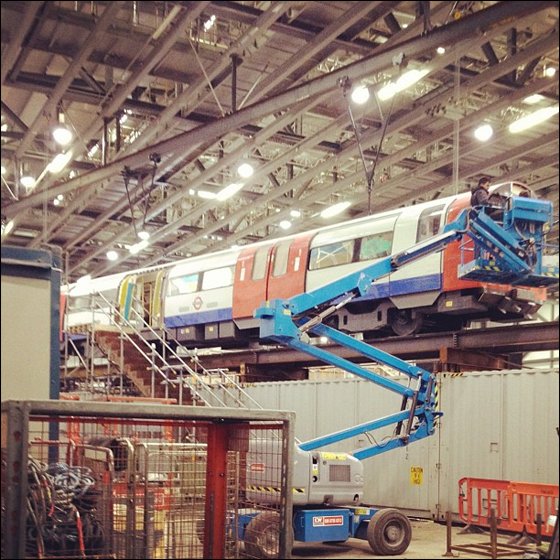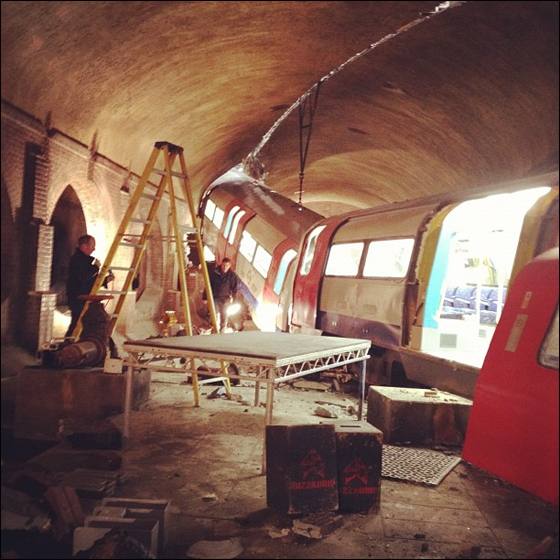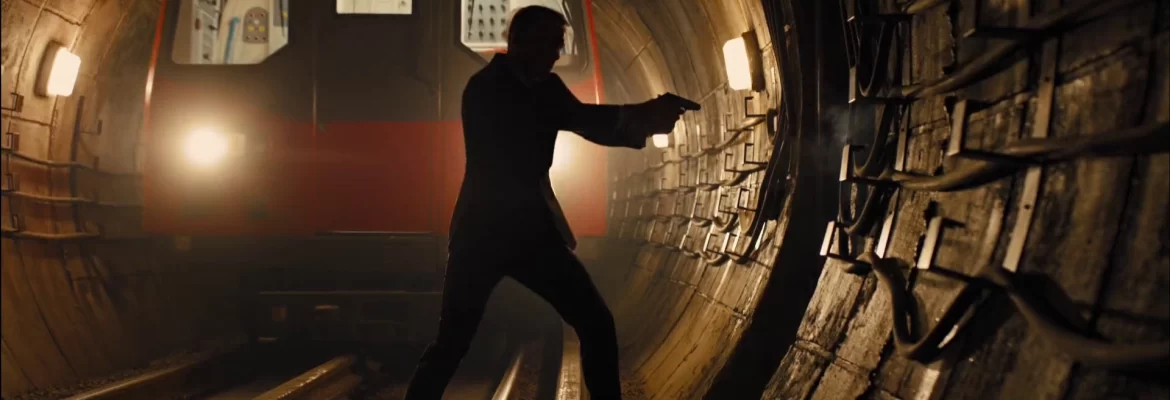Chris Corbould: Engineering Skyfall’s Underground Tube Train Crash
In Skyfall, villain Raoul Silva (Javier Bardem) derails a London Tube train, which James Bond avoids as it crashes through masonry in an underground tunnel.
The sequence is the brainchild of long-time Bond special effects supervisor Chris Corbould. That’s a full-scale replica you can see. There are no miniatures, and as Corbould told the Team Deakins podcast, the crash is a feat of engineering involving a complex monorail system, and a series of steps to slow the fast-moving train down as it derailed.
While the sequence only appears on screen for a few seconds, preparation was complex and involved consultation between Corbould and his experienced SFX crew, cinematographer Roger Deakins, who needed to film it, and production designer, Dennis Grassner, who needed to make changes to his catacomb set so the Tube train could look convincing as it crashed through masonry.
How Corbould Conceived the Sequence
But the first concern was conceiving the idea itself.
Corbould was finishing off work as SFX supervisor on The Dark Knight Rises when Skyfall’s director Sam Mendes called one night.
Corbould recalled Mendes asking him:
“‘Look I’ve got this great chase through the undergrounds of London. And I just need one jaw-dropping moment that will bring it all to a halt.’
I tend to fall asleep physically, but my brain doesn’t fall asleep. I think on that particular occasion I woke up at about two in the morning. Bing. We’re in the Underground in London. What would be more spectacular than a train crashing in [through the ceiling onto Bond]? I pitched the idea to Sam and he loved it. And the producers loved it.
I don’t think my crew were all that happy about it.”
Corbould Discusses How To Perform Train Crash With His Crew

Once Corbould finished The Dark Knight Rises he joined Skyfall, and his crew discussed how to crash a life-size Tube train through a hole in the wall and onto the floor of the set at Pinewood Studios.
On the Bond films, Corbould typically heads an SVX department of between 70 and 120 crew members. Corbould clearly respects his team, and there’s free-flowing discussion between them on how to achieve an effect, which, he says is now 70% mechanical with pulleys, pneumatics, and hydraulics. It’s civil engineering, mostly.
Senior Effects Technician Dan Homewood and Effects Designer Jason Leinster oversaw building the underground train crash, which required a pair of real Tube train carriages to be attached to an overhead monorail track system that extended across most of the 007 Stage at Pinewood Studios.
The crew talked about the train carriages’ length (60 feet long apiece) and their weight (5 tons each). Making these carriages crash on cue and in the right place is a massive undertaking, especially when the safety of people and not damaging the set and stage is considered.
Using An Overhead Monorail System
Corbould selected a monorail system, where the Tube carriages were hung from above, so they would plow into the ground on impact. It would have been very difficult to achieve this effect if the train was on a track, Corbould said.
“One of the biggest things was how do we stop it because each carriage weighed five tons each. And coming in at 25 – 30 mph there is a lot of momentum there. So we really had to get our head around how do we stop this thing.
We had about three or four different systems. Each one kicks in one at a time. Each one slowed it [the train carriages] down just a little bit, all within a very short space of time. You know there are magnets, which clamped hold of it and the final block really of the stopping mechanism is about 40 tons of sand.
…So it’s all about contingencies and having things up your sleeve. You know it’s not a good thing to put your eggs in one basket and just rely on one system … We took it in and out of the set very slowly. There was only going to be one go at it at that speed. ”
Consulting Production Designer Dennis Gassner And Cinematographer Roger Deakins

Corbould consulted Skyfall production designer Dennis Gassner to build up the floor with soft lightweight material so the carriages would plow the floor upon impact.
The train crash was done in one take. Skyfall cinematographer Roger Deakins remembered Corbould advising him where to put the cameras.
“I remember when we were setting up the cameras, you were saying the best positions. And you put a camera—you said, ‘The train’s going to stop exactly here.’ You put a camera like three feet from the stopping point, I think it was. And I’m saying, ‘Are you sure about that? It’s not my camera, but are you sure about that?’ And you were absolutely sure. And yes it was one take
… We had 11 cameras and everyone was usable and everyone did everything you said it was going to do. It was very impressive.”
When asked if he had any doubts about these camera setups, Corbould gave an emphatic “No.” That confidence comes from being one of the key personnel in one of the most professional and organized production crews in film: the Bond crew. He’s been working in special effects on the Bonds for nearly fifty years, and as a special effects supervisor since 1989’s Licence to Kill. Nobody in the industry does it better.


